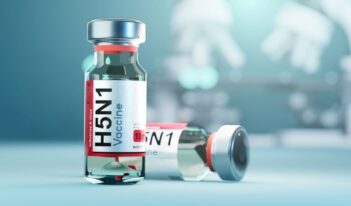
Congress should provide FDA with clearer authority and increased resources.
For much of the last half-century, the Food and Drug Administration has earned a reputation as one of the most effective and respected regulatory agencies in the federal government. Yet over the past several months, the FDA has become embroiled in serious controversy over its failure to prevent a national outbreak of meningitis linked to contaminated drugs, a calamity that has led to more than 675 reported cases and 44 deaths across nineteen states.
How could a good regulatory agency have gone so wrong?
Part of the answer stems from a shift in the underlying problems addressed by the FDA. Today these problems arise with production lines, not just product lines. The agency has in the past built its reputation by addressing the dangers of new drugs through an exacting, science-based pre-marketing review of safety and efficacy. By comparison, the agency has done less well at addressing the dangers of contamination during the day-to-day production of approved drugs.
Production lines are much harder to oversee than new products. To be sure, it’s no easy task to analyze the safety and efficacy of new drugs before they are sold. But at least the target isn’t moving constantly.
Contamination can arise anywhere and anytime along an increasingly complex, global production chain. The U.S. General Accountability Office has reported that about 80 percent of the ingredients used in drugs manufactured in the U.S. come from facilities located outside the country.
Short of standing watch at each facility producing drugs or drug ingredients, no regulator can guarantee contamination will not occur. The U.S. Department of Agriculture has for many years actually had inspectors located on-site at every meat processing facility in the country, but even these inspectors haven’t been able to spot all sources of contamination. Most contaminants of concern, after all, are invisible pathogens.
Despite the obvious challenges, regulators have developed process-based or management-based strategies for regulating production lines. The FDA has used them too. But they are never foolproof and cannot erase the fact that a regulator simply cannot have its eyes — and sampling swabs — on all parts of every production process at all times.
Still, in the wake of the meningitis calamity, members of the public rightly call for an investigation of what went wrong and what might be handled better in the future. FDA officials apparently knew for some time about cleanliness problems at the Massachusetts compounding pharmacy involved in the meningitis outbreak. With the benefit of hindsight, the FDA clearly should have done more. But looking forward, what is now to be done?
FDA Commissioner Margaret Hamburg has urged Congress to clarify FDA’s regulatory authority over compounding pharmacies like the Massachusetts facility, arguing that her agency has been hamstrung by unclear legal authority. Our view is that current law already gives the FDA the authority it needs to inspect and regulate compounding pharmacies. But we also recognize that existing law is murky enough to give recalcitrant compounding pharmacies room to resist and delay the FDA’s use of its authority. Corporate officials at the Massachusetts facility apparently took just such a hard line against the FDA’s authority, which may have contributed to the ultimate health tragedy.
Now that the legal issue is on the political agenda, Congress should act to make FDA’s authority abundantly clear.
Clear legal authority, of course, is but one resource a regulator needs to be effective. Given how daunting it is to inspect production processes at facilities around the world, the FDA also needs to deploy more inspectors in the field. In an era of fiscal austerity, such resources will be hard to come by. Yet the fact remains that the FDA is woefully under-funded given the range of consumer products under its purview.
Only two years ago, though, Republicans and Democrats came together to support the need for FDA to inspect food processing facilities more frequently. Drug processing safety ought to be another obvious candidate for bipartisanship.
Of course, even with additional funding, FDA must still deploy its inspectors as efficiently as possible. The agency should work to improve its use of statistical analysis to identify and then follow up with potentially problematic facilities.
Policymakers also should learn from the FDA’s success in pre-marketing drug approval. Without discounting the agency’s contributions in this area, the reality is that pre-marketing approval works as well as it does because of the actions of others. The pharmaceutical industry and academic research community produce the underlying scientific research the FDA reviews, and drug approval decisions stick thanks to countless actions by responsible doctors, pharmacists, and hospitals who stand ready to report sales of unapproved drugs.
When it comes to policing drug manufacturing processes around the world, policymakers need to search for similar ways to leverage the action of others outside the agency, whether they be insurance companies, unions, third-party auditors, or supply chain managers.
The recent problems associated with the Massachusetts facility will no doubt generate much attention as to what went wrong. But it should also be occasion for looking ahead.
Members of Congress should act now to ensure that the FDA going forward has both the legal authority and the monitoring resources to achieve its mission of ensuring drugs have been produced under clean and safe conditions.





